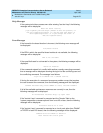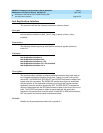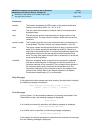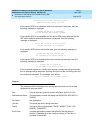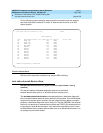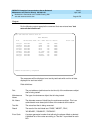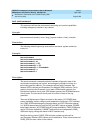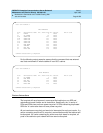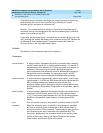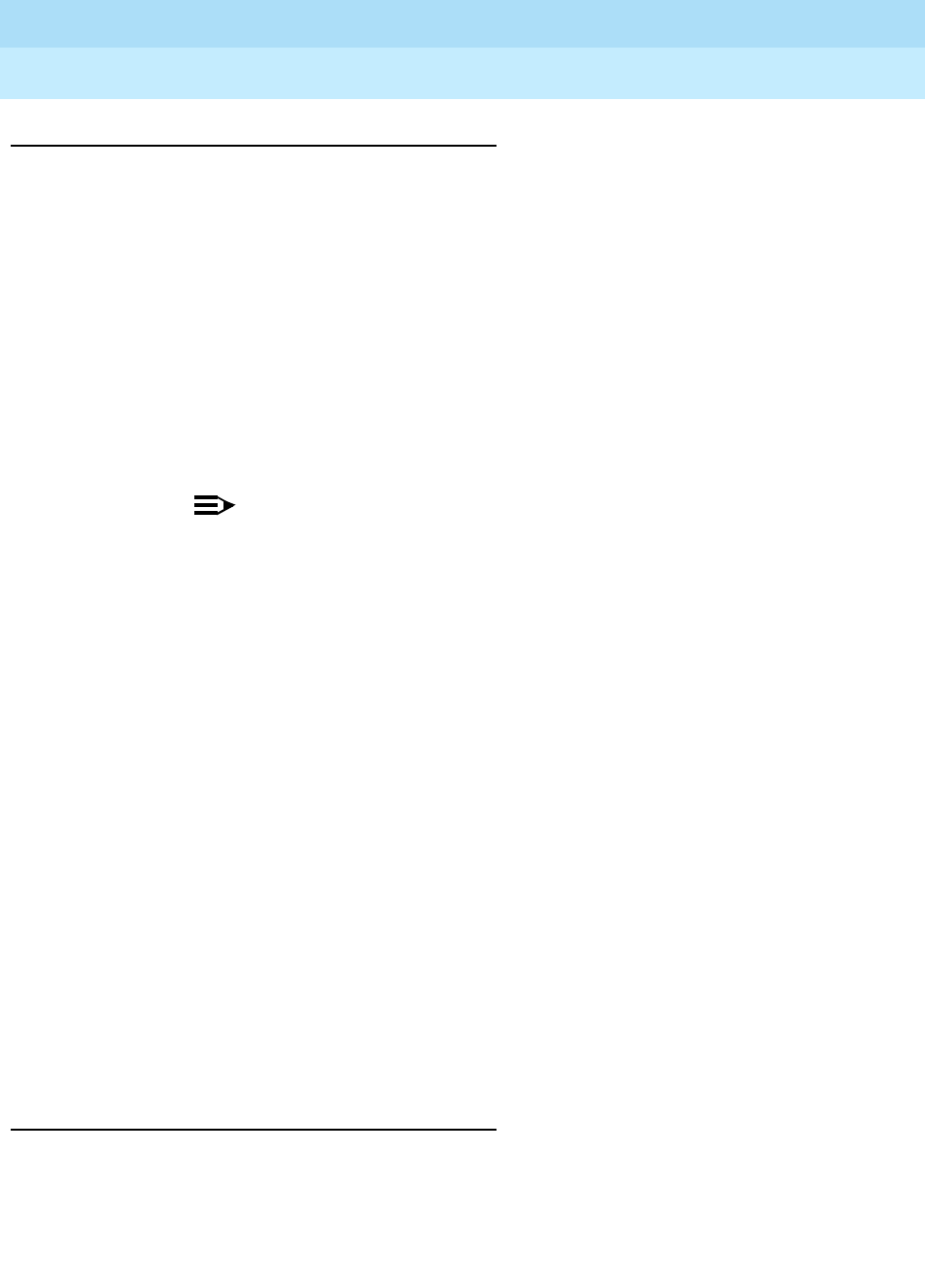
DEFINITY Enterprise Communications Server Release 5
Maintenance and Test for R5vs/si
555-230-123
Issue 1
April 1997
Maintenance Commands and Trouble-Clearing Aids
Page 8-578test eda-external-device-alrm
8
Parameters
Examples
test eda-external-device-alrm all
test eda-external-device-alrm all schedule
test eda-external-device-alrm physical 1major r 10
test eda-external-device-alrm physical 2c1101 c
physical location In addition to entering the word "physical" the system technician
must specify the physical location. For an administered external
device alarm analog line port, a "physical location" represents the
physical position of the port to be tested and is entered as
"UUcSSpp" where "UU" represents the cabinet number (1-MAX_
CABS), "c" represents the carrier, "SS" represents the slot position,
and "pp" represents the circuit.
Since the "maintenance board" alarm connections connect to
control carrier boards that are in unnumbered slots, the standard
port format cannot be used to designate these alarm connections.
The special ports UUmajor and UUminor are used designate the
major or minor maintenance board alarm connection for cabinet UU.
NOTE:
The major/minor designation specifies the pair of wires, not
the alarm level associated with the connection (
i.e
. the "major"
port can be administered as a major, minor or warning alarm
and the "minor" port can be administered as a major, minor or
warning alarm).
The "all" location is used to test all administered external device
alarm ports on analog line boards and maintenance boards.
repeat number The "number" specifies how many times the “test physical location”
is to be repeated. "Number" may be any integer between 1 and 100.
clear This option causes the test sequence (short or long) to repeat until
the alarm (if one exists against the maintenance object) is cleared or
a single test in the sequence fails. If no alarms are registered
against the maintenance object then the test sequence will be
exercised only once.
schedule When the "schedule" option is specified, the command is validated
and then a scheduling form is displayed to allow the technician to
schedule execution of the command. The command is then placed
in the command queue and is executed at the specified time. The
information displayed by the command is sent to the system printer
instead of the screen. Refer to the Report Scheduler and System
Printer feature specifications [1] for more details.




